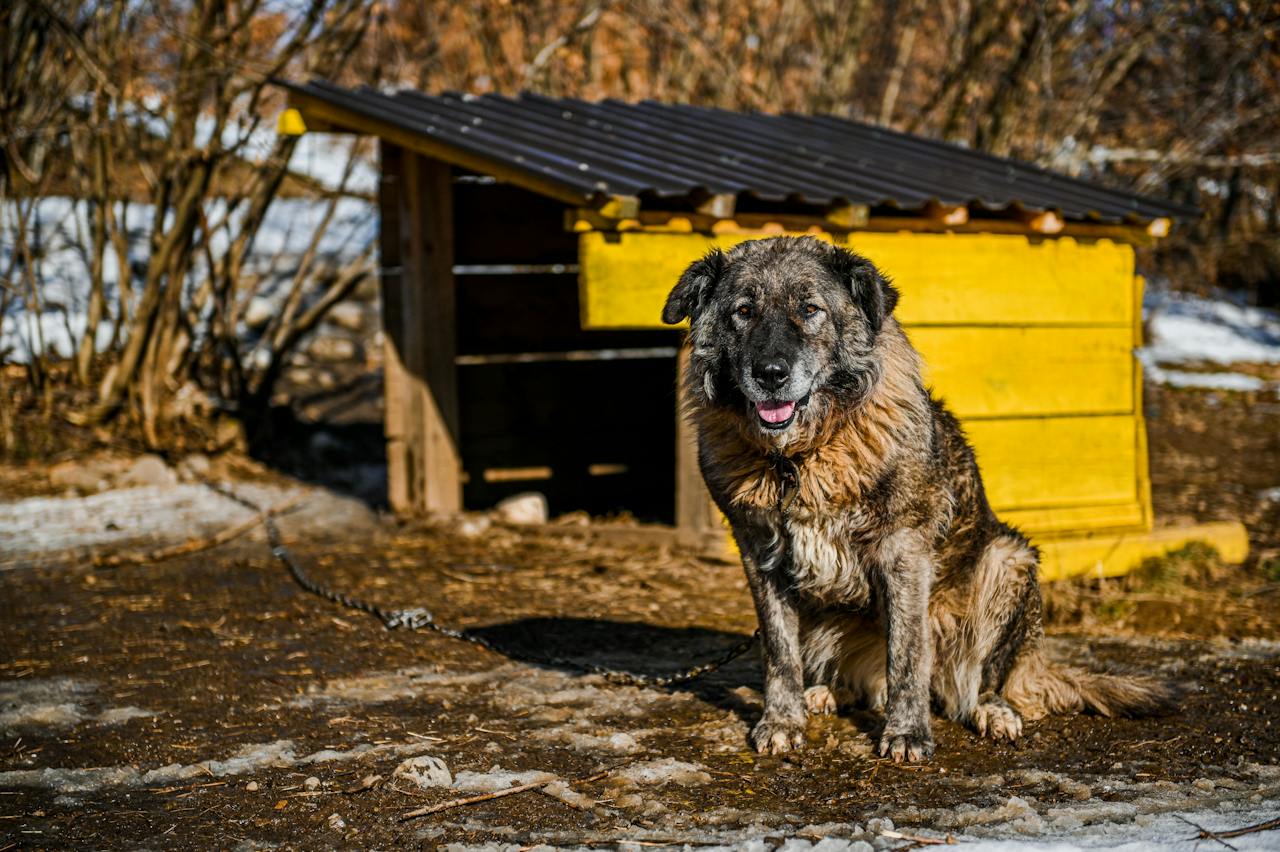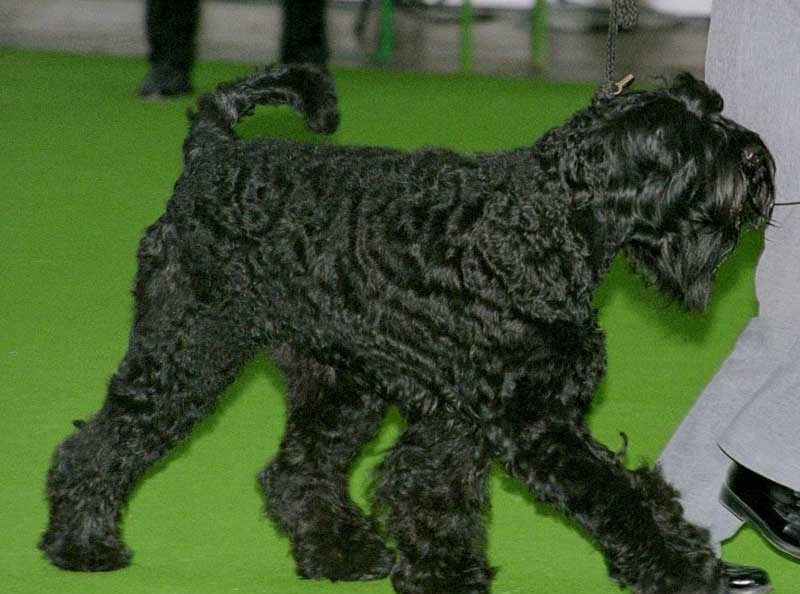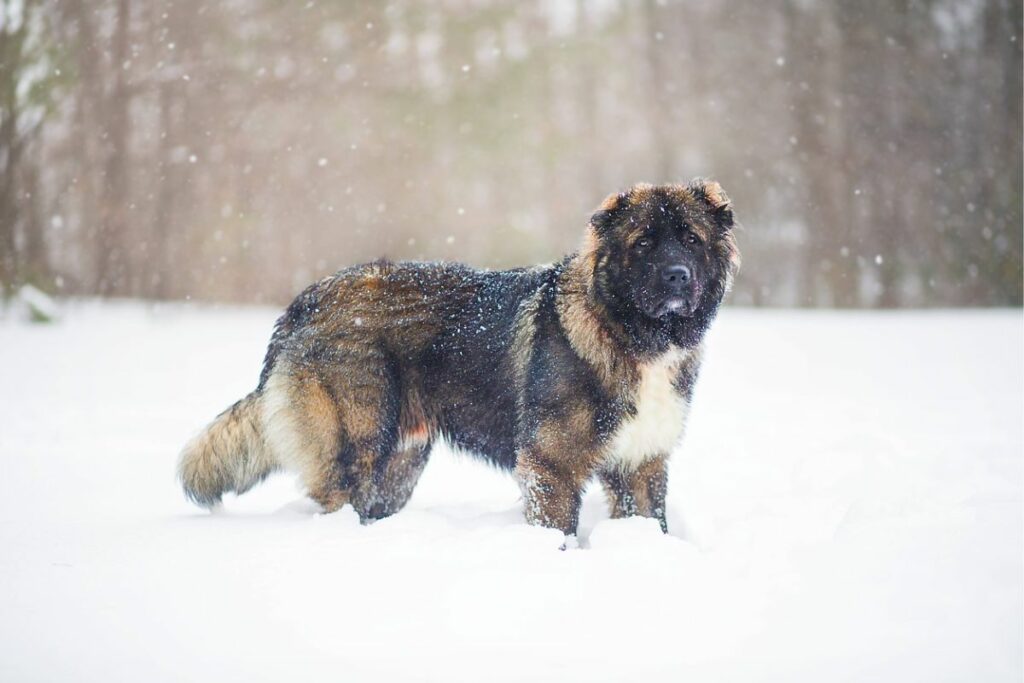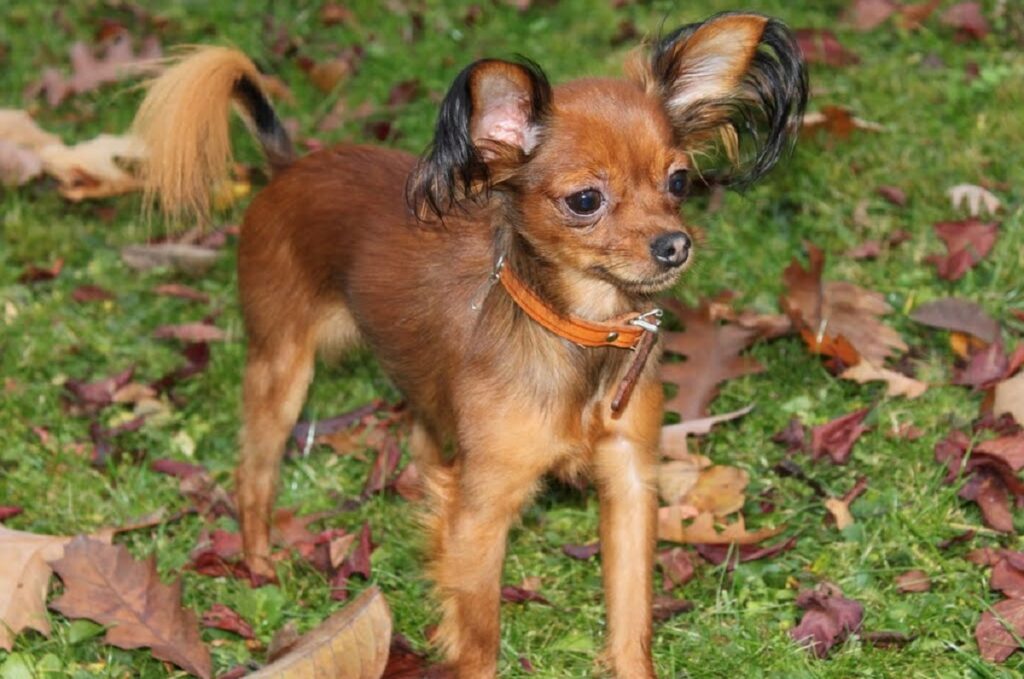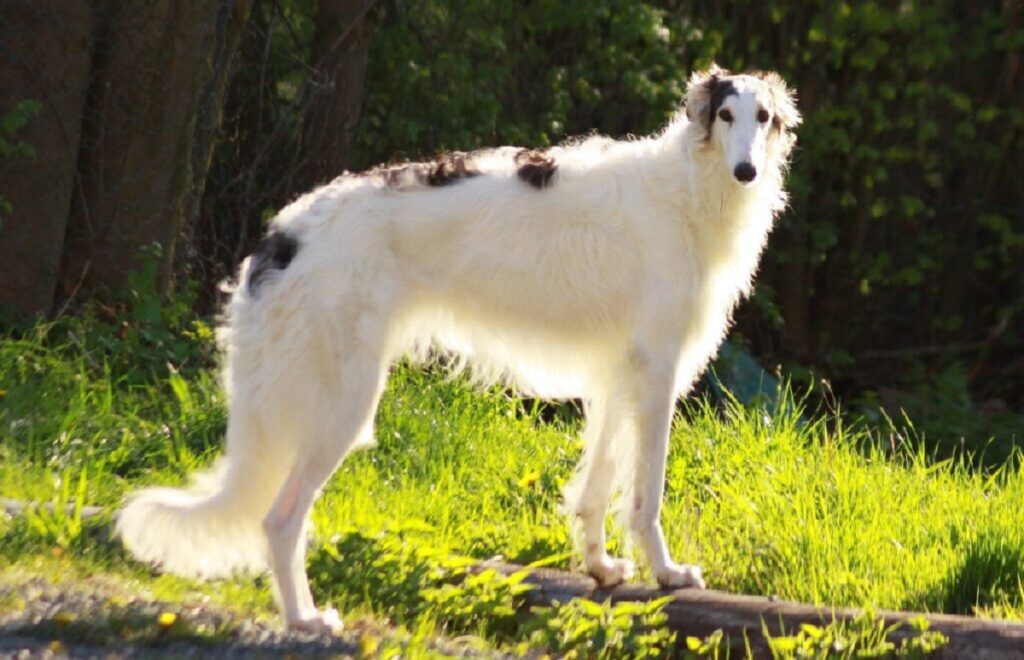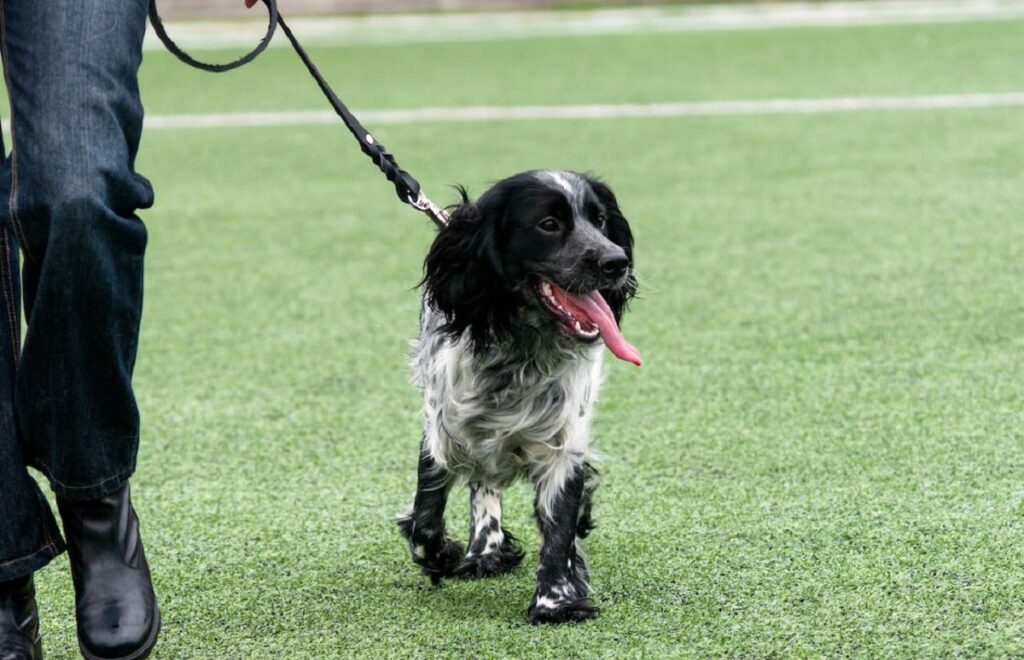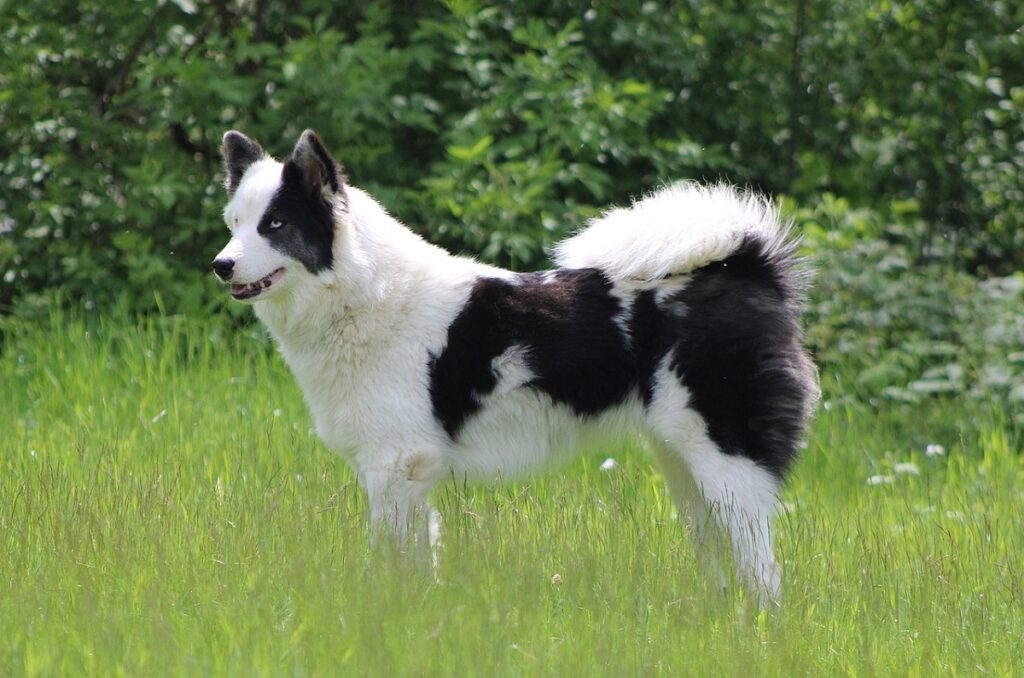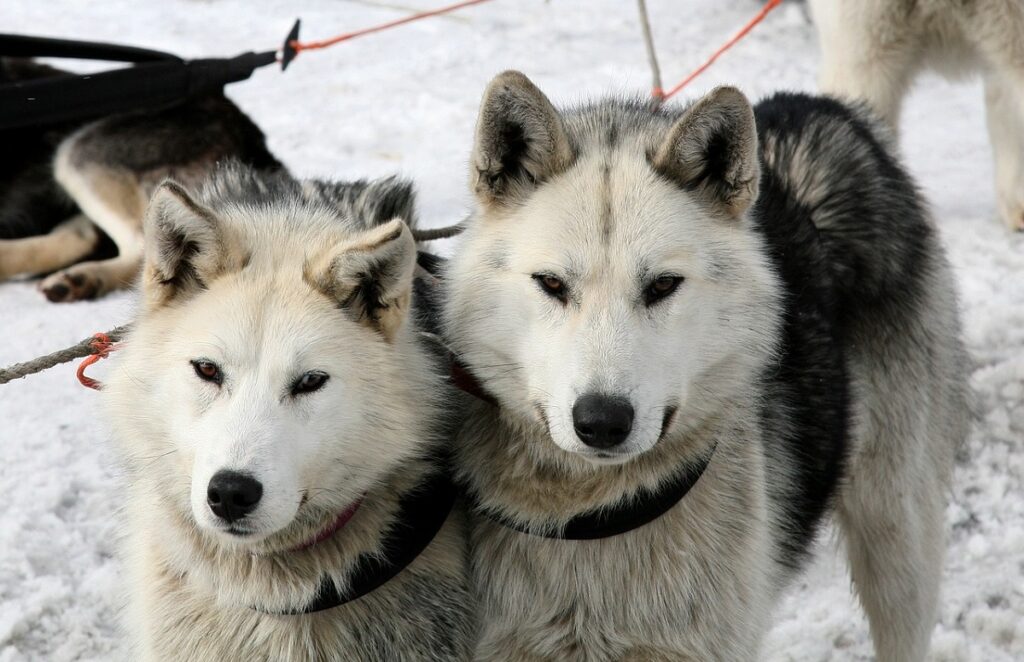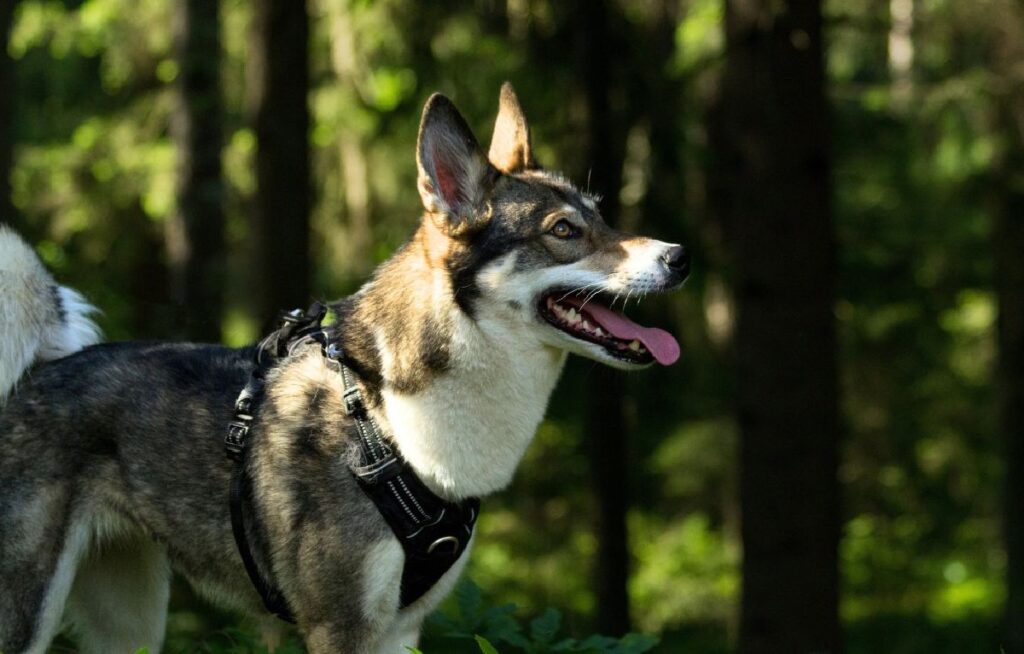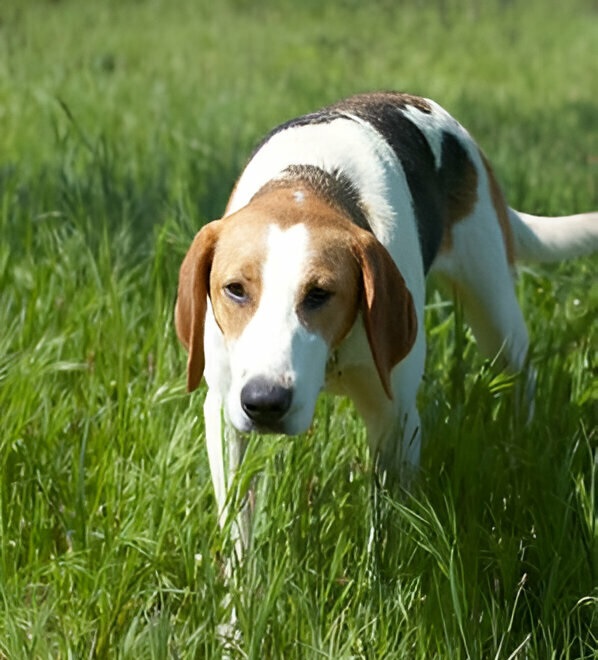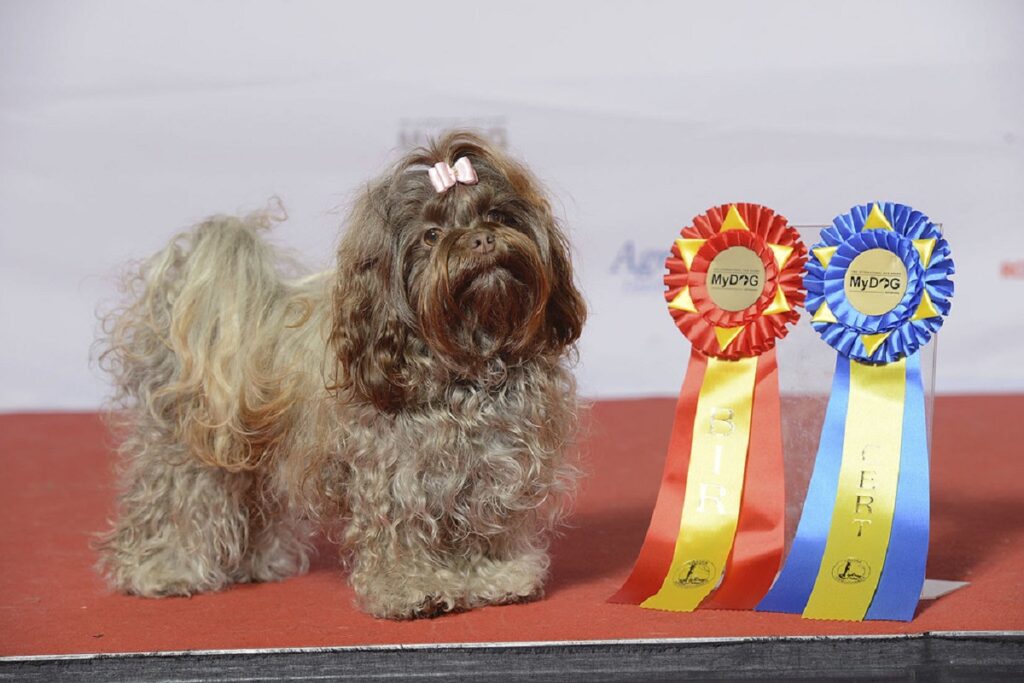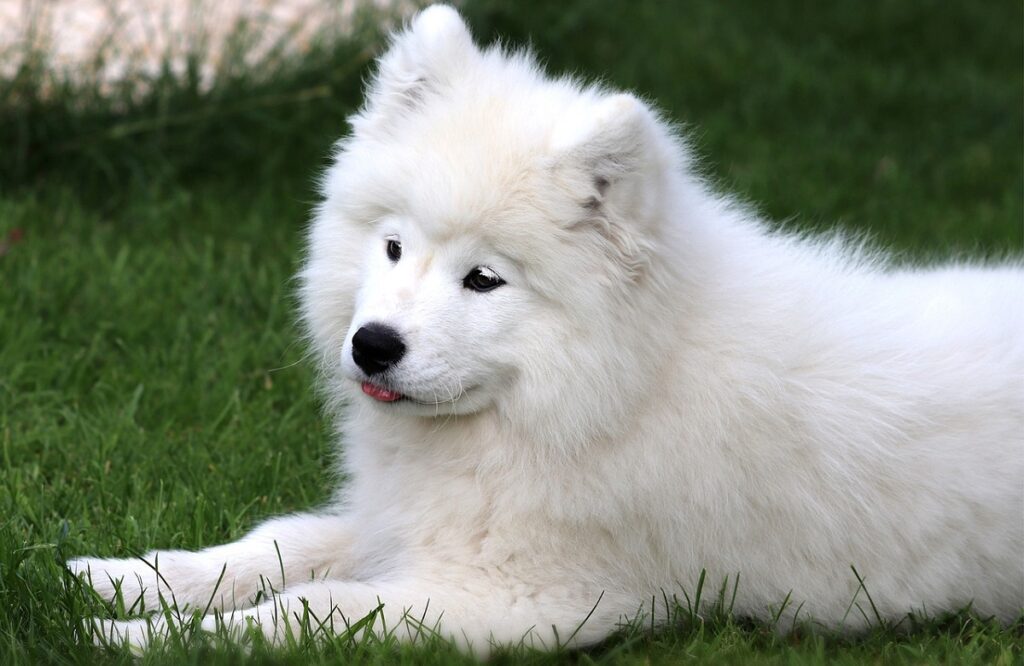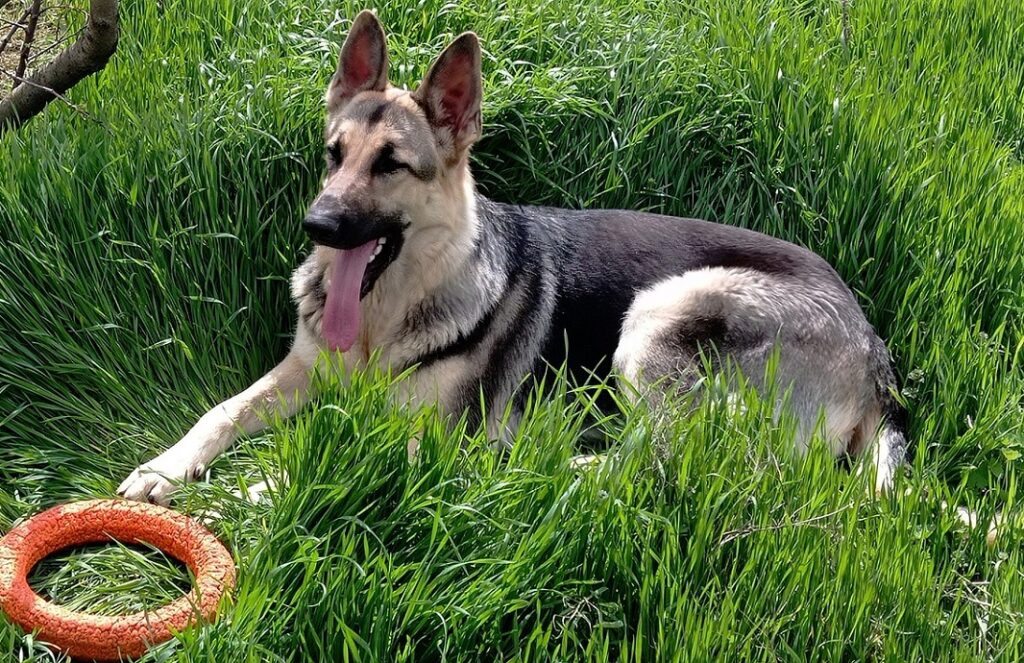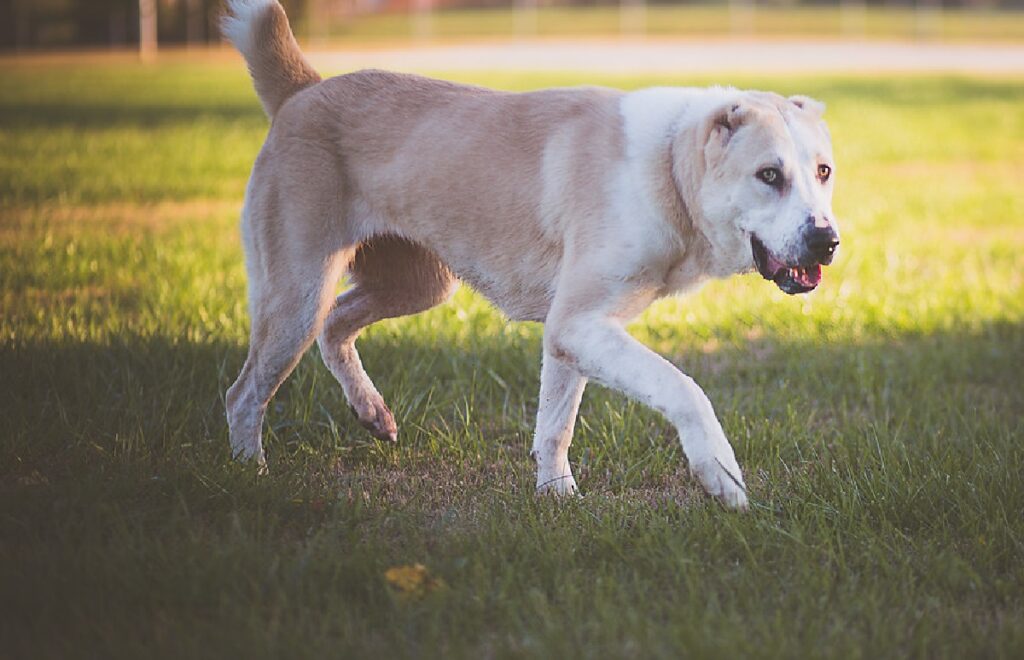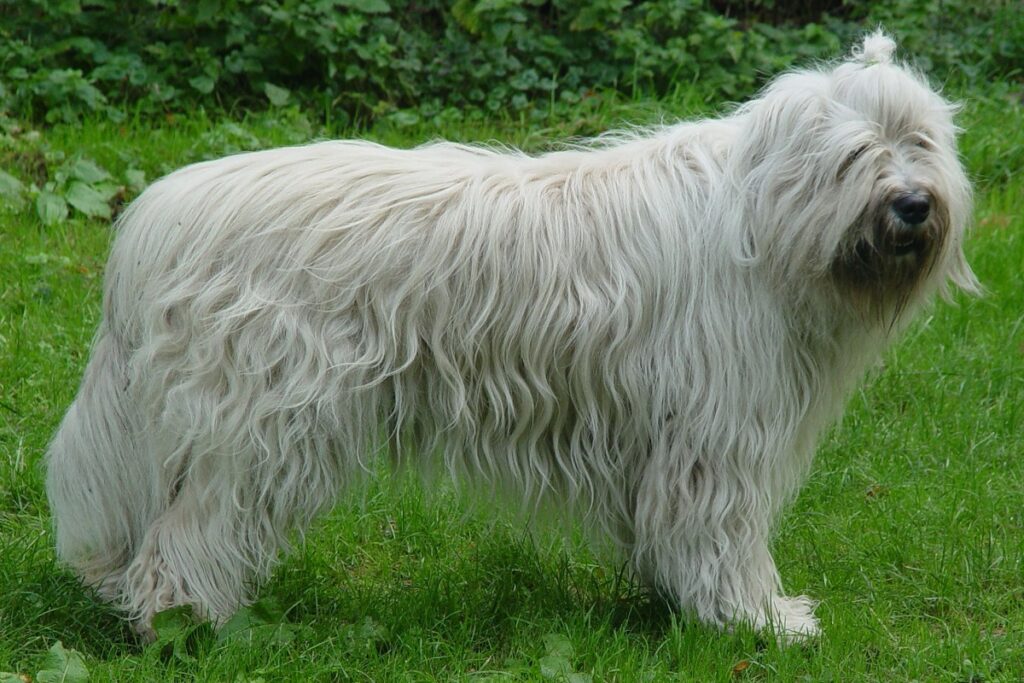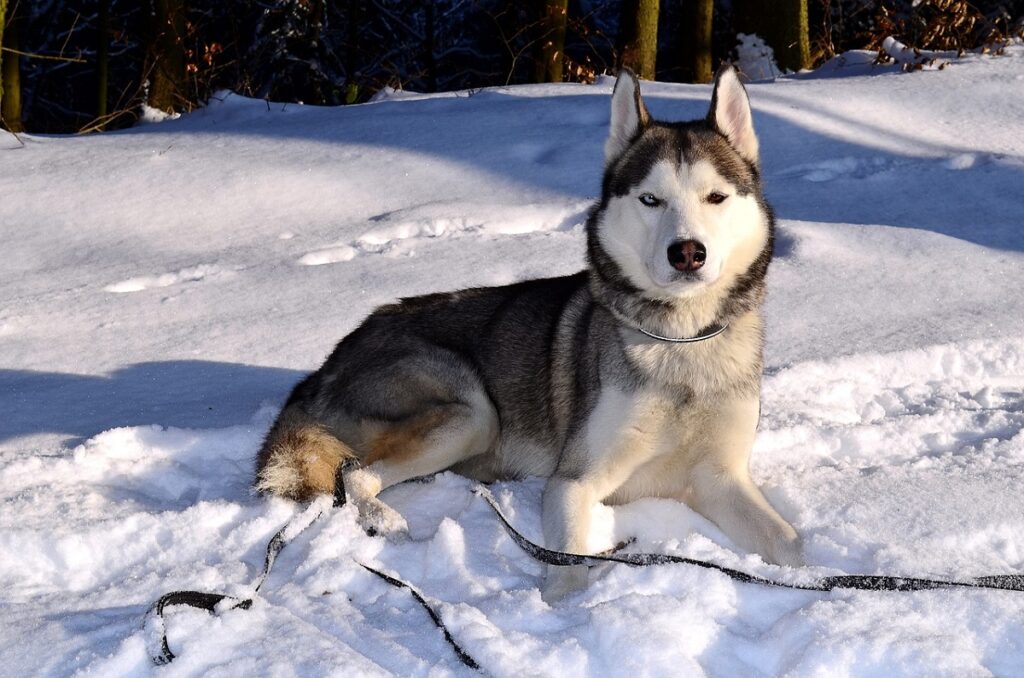From the snowy Siberian plains to the bustling streets of Moscow, Russia boasts a rich canine heritage. Discover 15 remarkable dog breeds forged in this vast and diverse land. From powerful guardians like the Caucasian Shepherd Dog to the elegant Borzoi, these breeds showcase resilience, strength, and often a striking beauty. Whether you’re seeking a loyal companion or a dedicated working dog, explore the fascinating world of Russian dog breeds and find a breed that captures your heart.
Many Russian dog breeds were bred to thrive in the often freezing Russian climate. Their big fluffy coat served to protect them from the harshest temperatures. Russia isn’t just a beautiful country with incredible architecture and snow-capped mountains; it is also home to some lovely dog breeds.
Survival In the Tundra
The tundra, characterized by its cold, harsh climate and frozen landscapes, requires special survival skills and traits. Dogs in this environment have evolved specific features, behaviors, and resilience to thrive amidst the icy winds and snow.
In 2021, the temperature dropped to minus 73 Fahrenheit in Delyankir, which is in northern Russia. Russian dogs bred in the northern half of Russia have double coats to survive the winters.
History of Russian dogs
Most of the Russian dog breeds guard, shepherd, and go hunting. There are some smaller Russian dog breeds whose job was to be in the the house adoring and being loved by their human family. Sounds like a warmer gig.
Russian Dog Breeds
From the vast Siberian tundras to the bustling streets of Moscow, Russian dog breeds have tales as rich as the nation itself. Let’s embark on a journey through Russia’s canine legacy, where each bark echoes a story of heritage and pride.
1. Black Russian Terrier
| GROUP | Working dogs |
| DOG’s SIZE | 26-30 inches tall |
| WEIGHT | 80-130 pounds |
| FUR AND COLOR | Shaggy double coat inblack, salt, pepper, black and tan, sable, blue |
| LIFE SPAN | 10-12 years |
| SHEDDING FACTOR | Moderate, brush 1-2 times/week |
Black Russian terriers are intelligent, brave, strong, calm, powerful, energetic, and protective. Black Russian Terriers were originally bred at a secret location near Moscow called the Red Star Kennel in the 1930s.
The Black Russian terrier was meant to be a super dog for the army. Giant Schnauzers, Airedale Terriers, and Rottweilers — with a touch of Newfie for sweetness — were combined.
The Black Russian terrier was a fence dog that patrolled Russia’s borders and also tackled and held Stalin’s prisoners. They were designed to withstand the coldest Russian temperatures.
These adorable, curly-haired, and powerful dogs have left military life behind and are now pets. Guarding tendencies run deep, so they are great watchdogs.
2. Caucasian Shepherd
| GROUP | Working |
| DOG’s SIZE | 22-30 inches tall |
| WEIGHT | 99-170 pounds |
| FUR AND COLOR | Dense, double, waterproof coat in fawn, gray, red, white, rust, black and gray, agouti and white, grizzle, sable |
| LIFE SPAN | 10-12 years |
| SHEDDING FACTOR | Long-coated shed more than short-coated, brush twice a week to prevent matting |
Caucasian shepherds are gorgeous supersized balls of fluff that have been guard dogs for centuries. The Caucasian shepherd is fearless, bold, and fierce on the job but devoted, kind, and loving with their family — even other family pets.
The Caucasian shepherd dog guarded livestock as well as their families. The two types are long-coated Mountain and short-coated Steppe (a bit smaller).
The Caucasian shepherd hails from the Caucasus mountain range of Eastern Europe and is believed to be closely related to sheepdogs of the Balkans and mastiffs of Asia.
According to the American Kennel Club, “The first mention of a large Molossoid dog used by the army of Armenian Tsar Tigran the II dates from the first century BC.” Only the toughest dogs survive the weather and other animals.
These shepherd dogs make soft and kind companions despite being bred to hunt large game. They protected livestock from fearsome predators like wolves.
3. Russian Toy
| GROUP | Toy |
| DOG’s SIZE | 8-11 inches tall |
| WEIGHT | Up to 6.5 pounds |
| FUR AND COLOR | Long and short-haired inred and brown, black and tan, blue and tan, red, sable, red, brown and tan, fawn, cream, lilac |
| LIFE SPAN | 12-14 years |
| SHEDDING FACTOR | The long-haired ones shed more than the short-haired ones and need to be brushed 2-3 times per week |
The Russian toy was bred to occupy human laps. While other Russian dog breeds are out in the bitter cold guarding and hunting, these little scamps are inside warming someone’s lap, or one can find the Russian toy terrier tucked under someone’s arm.
The Russian toy loves attention and enjoys running around. They are sweet companion dogs. Royals were gifted toy breeds from other countries.
The Russian toy terrier is an adorable little Russian dog that’s charming, loyal, smart, affectionate, playful, protective, trainable, good with children and dogs, and they bark a lot so they make very good watch dogs. They are rare because breeders stopped breeding them during the Russian Revolution.
This Russian dog dates back to the 18th century when the English Toy Terrier arrived. The Russians appropriated them and named them the Russian Toy Terrier.
Breeders stopped breeding them during the World Wars when they focused on breeding working dogs, and the breeding of companion dogs stopped. That’s sad because small dog breeds are precious.
4. Borzoi
| GROUP | Hound |
| DOG’s SIZE | 26 inches tall or more |
| WEIGHT | 60-105 pounds |
| FUR AND COLOR | Curly, silky coat, medium coat in black and cream, black and brindle, silver brindle, gold brindle, silver sable, gold sable, brindled sable, sabled gold, sabled red, fawn, mahogany brindle, blue brindle, cream sable, red sable, sabled cream, mahogany red, blue and cream, brown, red brindle, white, black, black and tan, brindle, blue, gold, sable, apricot, red, cream, silver |
| LIFE SPAN | 9-14 years |
| SHEDDING FACTOR | Daily brushing prevents excessive shedding, mostly shed when seasons change |
The Borzoi are independent, friendly, playful, affectionate, protective, energetic, and loyal dogs. The Borzoi is also calm and strong and runs 35-40 miles per hour.
The Borzoi, elegant and bred from the ancient Greyhound template, was originally known as the Russian Wolfhound and spent their time wolf hunting. Their splendor saw them historically winning the hearts of Russian aristocracy.
In the late 1800s and early 1900s, the Russian aristocracy hosted hunting extravaganzas during which Borzoi pursued wolves. In the US, the name Borzoi, an archaic Russian adjective which means ‘fast,’ replaced the term Russian Wolfhounds.
Borzyi is the Russian word for swift. One of the ten fastest dog breeds with their streamlined snout, Borzois needs consistent training with positive reinforcement.
5. Russian Spaniel
| GROUP | Not recognized by AKC |
| DOG’s SIZE | 15 to 17.5 inches tall |
| WEIGHT | 20 to 35 pounds |
| FUR AND COLOR | Short and silky hair in black and white, tricolor, brown and white, red and white |
| LIFE SPAN | 14 years |
| SHEDDING FACTOR | Minimal |
The Russian Spaniel is friendly, strong, energetic, lively, cheerful, active, good with kids, has a high prey drive, and is a sweet dog. The Russian spaniel was bred around 100 years ago as a gun dog.
These hunting dogs have stamina and love to retrieve, but at home, they are just adorable pets with really cute floppy ears.
The Continental Kennel Club says they were used by Russian sportsmen in the late 1800s. They aren’t as popular as the Cocker spaniel, but Russia has many of them, and the US has begun importing them.
Russian spaniels had to be bred for cold weather to hunt in Russia. So many beautiful different spaniel breeds were specifically bred, leading to a diverse array of stunning dogs, each with its unique charm and resilience.
6. Yakutian Laika
| GROUP | Working |
| DOG’s SIZE | 21-23 inches tall |
| WEIGHT | 40-55 pounds |
| FUR AND COLOR | Medium double coat in white, white and black, black and white, white and gray, gray and white, white and red, brown and white |
| LIFE SPAN | 10-12 years |
| SHEDDING FACTOR | Excessive, brush daily |
The Yakutian Laika is intelligent, affectionate, good with children and other dogs, playful, protective, energetic, and likes to bark.
The Yakutian laika (laika means barking dog) was bred to pull sleds and hunt. They are named after natives of Yakutia in Siberia, whom this Russian dog breed helped live in extremely cold weather.
Yakutians like agility courses and are happy to herd reindeer and hunt, as well as deliver mail, but they are also nice family dogs. They need to be trained young because they have a high prey drive.
7. East Siberian Laika
| GROUP | Not recognized by the AKC |
| DOG’s SIZE | 21-25 inches tall |
| WEIGHT | 40-51 pounds |
| FUR AND COLOR | Medium double coat in pepper and salt, white, grey, black, red, and brown in all shades |
| LIFE SPAN | 12-15 years |
| SHEDDING FACTOR | Shed a lot, especially during season changes. Brush weekly. |
The East Siberian Laika is independent, calm, stubborn, protective, friendly, affectionate, good with children they are raised with, territorial, and can’t resist chasing small prey.
They are not always good with other dogs, especially those of the same gender. They are the largest of the Russian Laika dogs and bark the least.
They are an ancient breed from 2,000 years ago. It’s believed that they migrated from China and Mongolia. East Siberian Laikas need a lot of space and exercise and enjoy spending time outside. They are very loyal dogs.
8. West Siberian Laika
| GROUP | Not recognized by AKC |
| DOG’s SIZE | 20-23 inches high |
| WEIGHT | 40-55 pounds |
| FUR AND COLOR | Dense harsh coat in white, red, salt and pepper, and all shades of gray. |
| LIFE SPAN | Profuse, brush outside daily |
| SHEDDING FACTOR | 14-16 years |
West Siberian Laikas are a bit larger than East Siberians and have a stronger prey drive. They descend from wolves, Japanese, and Chinese dogs. West Siberian Laikas are lively, protective, territorial, aggressive, balanced, and have a high prey drive.
Can be good with children if they are socialized and trained at a young age. Chinese and Japanese dog breeds are crazy adorable.
In the 1930s and the 1940s, the four Laika breeds were officially separated by region (Karelo-Finnish Laika, Russo-European Laika, West Siberian Laika, and East Siberian Laika). Like the other Laikas, they need exercise, outdoor time, and space. They are vocal dogs and versatile dogs.
9. Russian Harlequin Hound
| GROUP | Not recognized by the AKC, hound |
| DOG’s SIZE | 22-27 inches tall |
| WEIGHT | 40-70 pounds |
| FUR AND COLOR | Short, thick, and dense coat in black, white, and merle and yellow and red patches |
| LIFE SPAN | 10-12 years |
| SHEDDING FACTOR | Moderate, brush once or twice per week |
Russian Harlequins, formerly known as Anglo-Russians, are a relatively rare breed and believed to be a cross between the Russian hound and English foxhound in the 19th century to hunt foxes and wolves.
They make nice family pets because they are smart, energetic, playful, obedient, eager to please, easy to train, and good with children and other dogs. They have a high prey drive.
Because they were hunting dogs, they like to work and exercise. These cutie pies look like tall Beagles and are Russian hounds. They need a large open space and a daily walk.
10. Russian Tsvetnaya Bolonka
| GROUP | Toy |
| DOG’s SIZE | 11 inches |
| WEIGHT | 6-9 pounds |
| FUR AND COLOR | Wavy medium in red sable, golden, sable, black and tan, red, black overlay, brown, black overlay, grizzle, black, brindle, black, brown, red, gray, wolf gray, fawn, blue, cream, silver |
| LIFE SPAN | 14-20 years |
| SHEDDING FACTOR | Some shedding,brush regularly |
Russian Tsvetnaya Bolonka aptly translates to Russian colored lapdog. The Tsvetnaya Bolonka is a little cutie pie that is playful, charming, inquisitive, very intelligent, sweet, affectionate, great with kids and dogs, friendly, playful, and very trainable.
They are more independent than most toy breeds.
They were created in 1951 when a white dog from Hungary and a coffee-colored dog from a circus touring in Leningrad were crossed. Maltese, Bolognese Shih Tzu, and other Toy breeds were added to the mix.
11. Samoyed
| GROUP | Working |
| DOG’s SIZE | 19-23.5 |
| WEIGHT | 35-65 pounds |
| FUR AND COLOR | Profuse double coat in white, biscuit, cream, white, biscuit |
| LIFE SPAN | 12-14 years |
| SHEDDING FACTOR | A lot, brush daily |
The beautiful Samoyed is friendly, gentle, good with kids, playful, protective, easy to train, energetic, and needs stimulation. They are affectionate dogs, and they are barkers. Their thick double coat enabled them to survive minus 60-degree weather in Oymyakon, Russia.
Sammies have upturned mouth corners (perma-smile) to prevent drooling, so icicles don’t freeze on their faces.
Their name comes from the Samoyede, a semi-nomadic people from Asia who migrated to Siberia a thousand years ago. They bred dogs for hard work in the harshest temperatures.
The Samoyede people, who only had tents for shelter, cuddled with their dogs at night for warmth. During the day, Sammies were sled dogs, hunted, and were watchdogs. They also guarded reindeer.
Sammies kept their people alive in incredibly harsh conditions in rural Russia because they are big cuddly bears with hardy origins.
12. East European Shepherd
| GROUP | Not recognized by AKC |
| DOG’s SIZE | 24-28 inches tall |
| WEIGHT | 75-105 pounds |
| FUR AND COLOR | Thick double coat in black and tan/silver, solid black, or sable |
| LIFE SPAN | 10-14 years |
| SHEDDING FACTOR | Brush once or twice per week during season changes |
East European shepherds, AKA Byelorussian Ovcharka, and Russian Shepherds, were created when old-fashioned German shepherds were bred with local Russian dog breeds like Ovcharkas and Laikas to create a larger dog that could handle the harsh weather.
The KGB bred this versatile dog. The East Euro is an active dog and needs a suitable outlet or will engage in destructive behaviors.
The East European Shepherd is brave, watchful, alert, fast, powerful, and intelligent. They have webbed paws to walk in the snow with ease. The East European shepherd is the Russian version of the German shepherd but with a thick undercoat.
They make good working dogs and are police dogs. The United Kennel Club says they were used for hundreds of years to hunt and sled in Siberia.
13. Central Asian Shepherd
| GROUP | Working |
| DOG’s SIZE | 25.5-27.5 inches and up |
| WEIGHT | 88-110 pounds |
| FUR AND COLOR | Double medium coat in brindle, gray, white, fawn |
| LIFE SPAN | 12-15 years |
| SHEDDING FACTOR | Not much shedding except season changes, which AKC refers to as a “fur storm” |
Central Asian shepherds are independent, courageous, and trainable watchdogs. They are quiet, proud, hard workers with endurance. Fearless with large predators.
First-time dog owners shouldn’t begin with a Central Asian shepherd. They bond with their people and are calm dogs.
Artifacts show that this breed dates back over 5,000 years. Rather than being a man-made breed, these shepherds developed by climate and ancient culture along the Silk Road.
Shepherd dog breeds are ridiculously gorgeous! Even today, nomadic tribes use them as guard dogs. As a former Akita mom, I also love Asian dog breeds.
14. South Russian Ovcharka
| GROUP | Working |
| DOG’s SIZE | 23-30 inches |
| WEIGHT | 99-170 pounds |
| FUR AND COLOR | Medium double coat in cream, fawn, gray, red, white, rust, black and gray, agouti and white, grizzle, sable |
| LIFE SPAN | 10-12 years |
| SHEDDING FACTOR | Some have longer coats, and those need daily brushing |
The South Russian Ovcharka, AKA, the Caucasian shepherd dog, are fearless, bold, kind, devoted, high energy dogs that love their family — including other pets. These native breeds don’t like unfamiliar dogs. They are fearless predators and need firm training.
The South Russian sheepdog has protected properties, guarded livestock, and done many jobs for centuries. The long-haired ones are the Mountain type, and the Steppe type weighs less and has a shorter coat. These Russian dogs date back around 2,500 years.
In the first century BC, Caucasians were mentioned as a large molossoid dog used by the army of Armenian Czar Tigran II. They’ve also been all over the Caucasus mountains. Historians say the Caucasian dog is a large dog and a close relative of Balkan sheepdogs and Asian mastiffs.
15. Siberian Husky
| GROUP | Working |
| DOG’s SIZE | 20-23.5 inches tall |
| WEIGHT | 35-60 pounds |
| FUR AND COLOR | Double medium coat in agouti and white; black and white; gray and white; red and white; sable and white; white; brown and white; black, tan, and white; black |
| LIFE SPAN | 12-14 years |
| SHEDDING FACTOR | Mainly shed when they blow their undercoat as the seasons change. Brush weekly. |
Siberian Huskies are affectionate, good with kids and dogs, friendly, playful, energetic, loyal, mischievous, and need mental stimulation. The Siberian husky, which is the most famous Russian dog breed, is a barker. They are one of the best-loved dog breeds. Sibes love running around the dog park.
The husky breed‘s fearless bravery was illustrated in 1925. A Sibe named Balto and 20 teams of sled dogs transported serum 674 miles in ice and snow to save people in the Alaskan town Nome during a deadly diphtheria outbreak.
They were originally bred in Asia by the Chukchi people as companions and to pull sleds. The semi-nomadic Chukchi developed a sled dog that could haul light loads.
They were the ancestors of today’s Siberian Husky. Huskies were imported to Alaska during the gold rush. Big, fluffy black and white dog breeds are very huggable!
Essential Considerations for Russian Dog Breeds
Some of the bigger, wolf-related Russian dog breeds require experienced dog owners who can train them and convince the canines that they aren’t the alpha. The toy Russian dog breed pups are less likely to take charge. Large Russian breeds need to be trained and socialized young because some can be aggressive.
FAQs
Which Dog Breeds Have Their Origins in Russia?
- Russkiy Toy
- Caucasian Shepherd Dog
- Samoyed
- Yakutian Laika
- South Russian Ovcharka
- Siberian Husky
- East Siberian Laika
- Borzoi
- West Siberian Laika
- Bolonka
- Moscow Watchdog
- Moscow Water Dog
- Chortai
- Karelo-Finnish Laika
- Nenets Herding Laika
- Russian Spaniel
- East-European Shepherd
- Central Asian Shepherd Dog
- Sulimov dog
- Anglo-Russian hound
- Russo-European Laika
- Russian hound
- Franzuskaya Bolonka
- Sakhalin Husky
What Is the Vicious Russian Dog Breed?
Caucasian shepherds are fiercely protective, and their bite force is as strong as a lion’s!
Any Russian Breeds Resembling Schnauzers?
The Black Russian Terrier
Wrap-up
Most of the Russian dog breeds seem to be wolf-like, fluffy, and typically large. They were used for hunting, pulling sleds, and protecting livestock. Many of the Russian dog breeds have high prey drives and need lots of space to run around.
Most are closely related to wolves, but there are a few adorable lapdogs, too. Ironic that Russian dog breeds are large working beasts with lots of fur or tiny indoor pets.
The Russian dog breeds are a beautiful bunch. The working dogs develop strong bonds with their humans and make nice pets, as well as great guard dogs.
From the majestic Caucasian Shepherd Dog to the playful Russian Toy Terrier, Russia boasts a diverse array of dog breeds, each with unique characteristics shaped by the country’s varied climate and history. Whether bred for guarding livestock, hunting, or companionship, these breeds demonstrate resilience, intelligence, and often a striking appearance. While some remain relatively unknown outside of Russia, others are gaining international popularity. Exploring these 15 breeds offers a fascinating glimpse into Russian culture and the enduring bond between humans and their canine companions.

